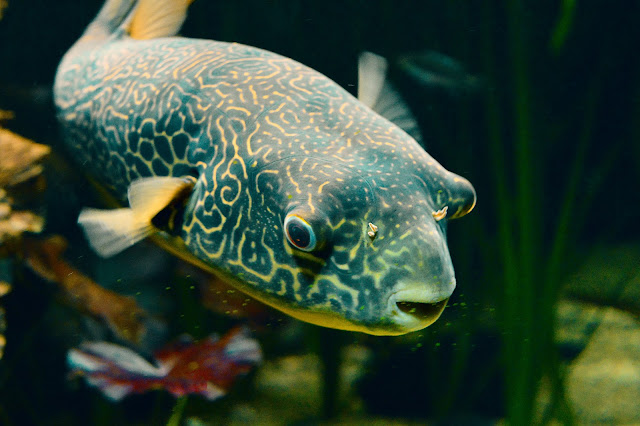Check fish and aquatic animals' food and supplies on Amazon >>
In this blog post, we'll look at how to get started with a freshwater or saltwater aquarium and what to expect when it comes to maintaining each one.
The main differences between a freshwater aquarium and a saltwater aquarium
Freshwater aquariums contain freshwater from a lake, river, or stream. The most popular fish in these aquariums include livebearers (such as guppies, mollies, and platies), tetras, and barbs.
To keep these fish healthy, a heater, filter, and light should be used. The temperature of the water should also be monitored closely, as it can affect the fish's health.
Saltwater aquariums contain saltwater, typically sourced from the ocean. They require special equipment to maintain the salt content and temperature. Fish that are common in saltwater aquariums include clownfish, angelfish, and damselfish.
It is important to remember that saltwater aquariums must be regularly tested for salinity levels, pH balance, and other essential factors to keep them safe and healthy. It is also important to note that some fish are challenging to care for, so you must research the species you plan on keeping before purchasing them.
Check fish and aquatic animals' food and supplies on Amazon >>
What type of fish can you keep in each type of aquarium
When setting up a freshwater aquarium, the type of fish you save will depend mainly on your preference. Although many other species are available, popular options include tetras, danios, guppies, mollies, and swordtails. These fish prefer warm temperatures and neutral pH levels and don't require special care or equipment.
Saltwater aquariums are much more complex and require specialised care than freshwater aquariums. Popular saltwater fish include clownfish, angelfish, blennies, cardinalfish, damselfish, and wrasses. These fish prefer warm temperatures, alkaline pH levels, and plenty of oxygenation.
They often require advanced filtration systems, protein skimmers, and high-output lighting to maintain a healthy environment.
Check fish and aquatic animals' food and supplies on Amazon >>
How to prepare and maintain each type of aquarium
When setting up an aquarium, the first step is to decide what type you want: a freshwater or saltwater aquarium. Both require different preparation and maintenance processes.
When preparing a freshwater aquarium, it is essential to use dechlorinated water. This can be done by adding a dechlorinating agent to the water before adding it to the tank.
Additionally, the tank should be filled with gravel, plants, and decorations. Plants are essential for keeping the aquarium balanced and providing hiding places for fish. A filter and aeration system are also necessary to ensure proper water circulation and keep the tank clean.
In terms of maintenance, it is crucial to keep up with regular water changes. It is recommended that 10-15% of the water be changed each week to keep it clean and toxins-free. Additionally, monitoring water parameters like pH and ammonia levels is essential to ensure they are in the correct range.
Starting with a cycled tank, which has established beneficial bacteria, is vital when setting up a saltwater aquarium. Additionally, adding the saltwater mix to the tank is crucial to creating the correct salinity level for the fish. This can take several weeks or months, depending on the size of the tank.
In terms of maintenance, it is essential to regularly test the water parameters such as ammonia, nitrite, and nitrate levels. Adding a buffering agent to the tank also stabilises the pH levels. Additionally, changing 10-15% of the water every two weeks is vital to keep the water clean and free of toxins.
Finally, feeding the fish regularly with various foods is essential to keep them healthy and happy.
Check fish and aquatic animals' food and supplies on Amazon >>
